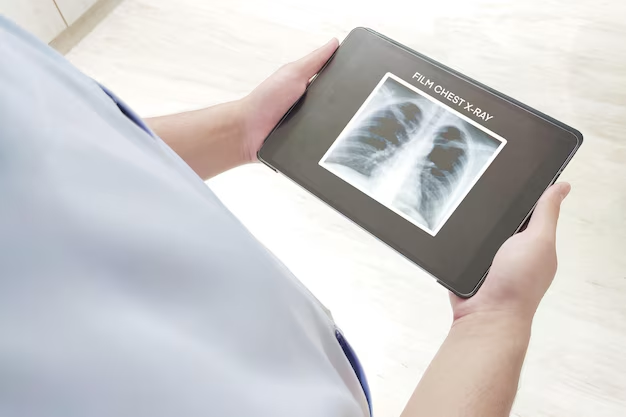Understanding Pulmonary Hypertension: WHO's Classification System Explained
Pulmonary hypertension (PH) is a complex condition characterized by elevated blood pressure in the pulmonary arteries, which can lead to serious complications. For both medical professionals and patients, navigating the different types of pulmonary hypertension is crucial for effective treatment. The World Health Organization (WHO) classification system plays an essential role in categorizing this condition, improving diagnosis, and guiding treatment plans. But what exactly does this classification entail, and how does it impact those affected by this condition?
Categories of Pulmonary Hypertension
The WHO categorizes pulmonary hypertension into five major groups based on similar clinical features, mechanisms, and treatment responses:
Pulmonary Arterial Hypertension (PAH): This is when the small arteries in the lung are narrowed or blocked, causing increased pressure and potentially leading to heart failure. Conditions like idiopathic PAH and heritable forms fall under this category.
PH Due to Left Heart Disease: This group involves increased pressure due to conditions affecting the left side of the heart, such as heart valve diseases or left ventricular dysfunction.
PH Due to Lung Diseases and/or Hypoxia: Respiratory conditions like chronic obstructive pulmonary disease (COPD) and sleep apnea can lead to this type of hypertension.
Chronic Thromboembolic Pulmonary Hypertension (CTEPH): This arises from blood clots in the lungs’ arteries that become scar-like tissue, causing blockages.
PH with Unclear Multifactorial Mechanisms: This includes cases where the cause is not well understood, often involving a range of syndromic, hematologic, or proliferative disorders.
Each category demands specific diagnostic and therapeutic approaches, which is why classification is vital. Early diagnosis and treatment are key to managing symptoms and improving quality of life.
The Importance of the WHO Classification System
The WHO classification system is more than just a list—it's an organizational framework that profoundly impacts clinical decision-making. It aids healthcare providers in selecting the appropriate therapies tailored to the particular PH group, which can range from lifestyle changes and medications to surgical interventions like lung transplantation in severe cases.
For patients, understanding their specific type of pulmonary hypertension empowers them to actively participate in their care, discuss options more effectively with their healthcare providers, and explore supportive resources, from insurance coverage to treatment grants.
Navigating Financial and Educational Resources
Managing pulmonary hypertension can be financially daunting, given the potential costs of ongoing treatments and specialist care. Fortunately, several resources can ease this burden:
Government Aid Programs: Look into programs such as Medicaid and Medicare for eligible patients, which can provide coverage and reduce out-of-pocket expenses.
Financial Assistance: Non-profits and medical foundations often offer grants for treatment-related travel and medication costs for those diagnosed with PH.
Debt Relief Options: For those struggling to keep up with medical expenses, exploring debt relief options, such as restructuring payment plans, might provide necessary support.
Educational Grants: Patients wishing to continue their education can seek specific scholarships or grants aimed at chronic illness sufferers, enabling them to pursue academic goals without adding financial stress.
Credit Card Solutions: Low-interest medical credit cards can provide flexibility, allowing for larger health-related expenses to be paid off over time.
Ultimately, navigating pulmonary hypertension requires a combination of medical, financial, and educational strategies. Taking advantage of a variety of resources can help patients reduce stress and focus on managing their health effectively.
🌟 Quick Guide to Financial & Educational Resources for PH Patients
- 💸 Medicaid/Medicare: Check eligibility for significant coverage support.
- 🏥 Non-Profit Grants: Investigate organizations offering direct financial aid.
- 📉 Debt Restructuring: Consider professional financial counseling for debt management.
- 🎓 Scholarships: Keep an eye out for educational funds for those with chronic illnesses.
- 💳 Medical Credit Cards: Explore payment options with favorable terms.
By understanding the WHO classification and leveraging available support systems, those living with pulmonary hypertension can better manage their condition and improve their quality of life, all while reducing the financial and emotional burdens associated with this challenging disease.

Related Topics
- a 66 Year Old Female With a History Of Hypertension
- Are Eggs Bad For Hypertension
- Are Eggs Good For Hypertension
- Are Endocrine Disorders Causing Hypertension Rare
- Can Adderall Cause Hypertension
- Can Alcohol Cause Hypertension
- Can Allergies Cause Hypertension
- Can Anemci People Get Hypertension
- Can Anemia Cause Hypertension
- Can Antibiotics Cause Hypertension